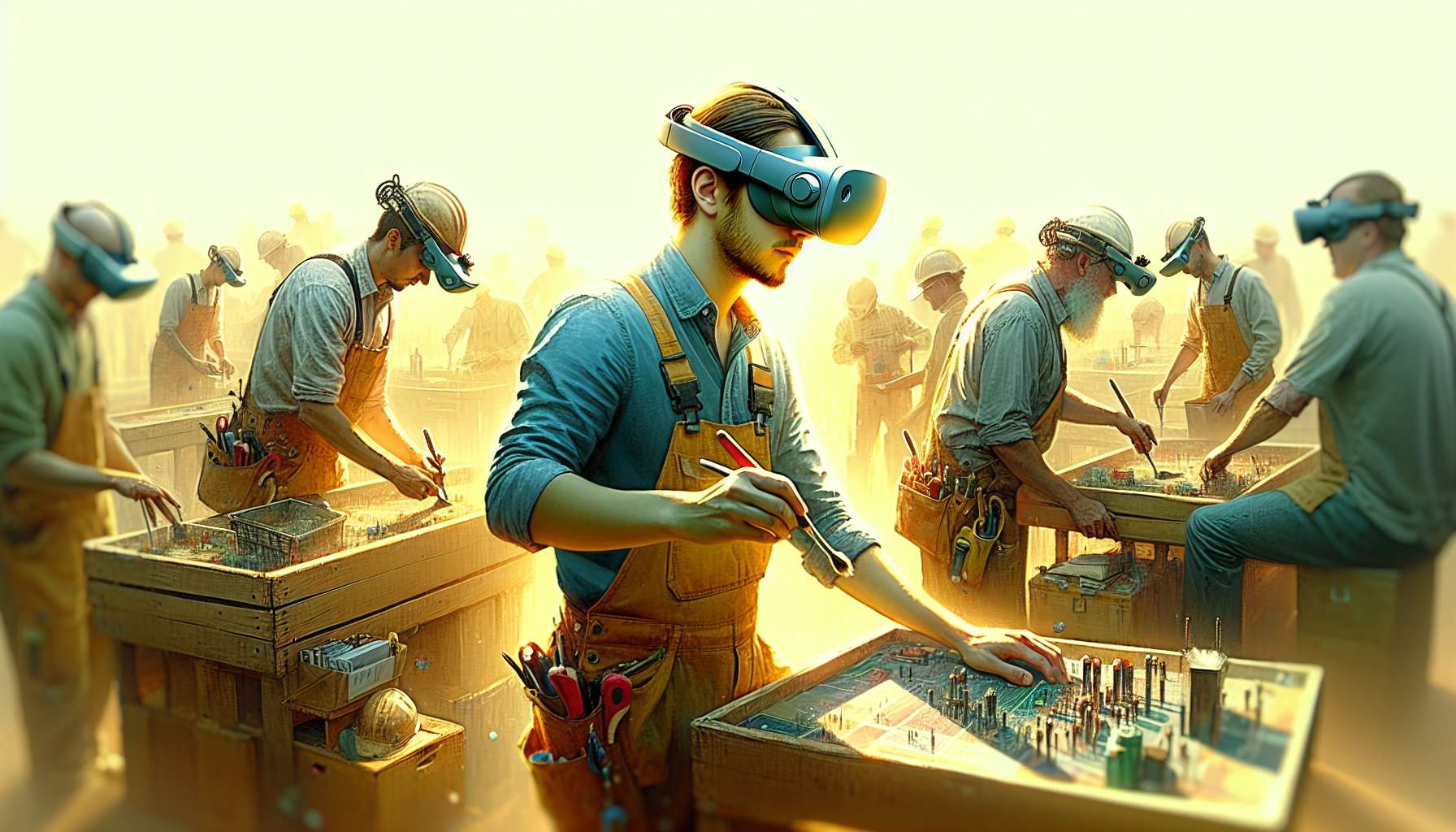Unlocking Efficiency: How Augmented Reality is Revolutionizing Industrial Maintenance
As technology continues to advance at an unprecedented pace, industries across the board are embracing innovative solutions to enhance their operations. One such groundbreaking technology that is transforming the industrial landscape is augmented reality (AR). By merging the virtual and physical worlds, AR is redefining the way industrial maintenance is conducted, offering key advantages and implementations that are revolutionizing the sector.
Enhanced Visualization and Training
One of the key advantages of using augmented reality for industrial maintenance is the ability to provide enhanced visualization and training. Traditional maintenance procedures often rely on manuals, diagrams, and complex instructions, which can be time-consuming and prone to errors. With AR, technicians can overlay digital information onto the physical equipment, providing real-time guidance and step-by-step instructions. This not only simplifies complex tasks but also reduces the learning curve for new technicians, enabling them to quickly acquire the necessary skills and knowledge.
Furthermore, AR can simulate various scenarios, allowing technicians to practice maintenance procedures in a virtual environment. This immersive training experience enhances their understanding of the equipment and its intricacies, enabling them to perform tasks more efficiently and effectively.
Remote Assistance and Collaboration
Another significant advantage of AR in industrial maintenance is the ability to provide remote assistance and collaboration. In complex industrial settings, technicians often encounter challenges that require expert guidance. With AR, remote experts can virtually join the maintenance process, providing real-time support and guidance from anywhere in the world.
Using AR-enabled smart glasses or mobile devices, technicians can share their field of view with remote experts, who can then overlay instructions, annotations, or even 3D models onto the technician’s view. This enables experts to guide technicians through complex procedures, troubleshoot issues, and provide immediate solutions. By eliminating the need for experts to be physically present on-site, AR significantly reduces downtime and travel costs, while also improving the overall efficiency of maintenance operations.
Real-Time Data and Analytics
AR technology also empowers industrial maintenance by providing real-time data and analytics. By integrating AR with Internet of Things (IoT) devices and sensors, technicians can access critical information about the equipment’s performance, health, and maintenance history in real-time. This data can be displayed as overlays on the technician’s AR device, providing valuable insights and alerts.
For example, AR can highlight potential issues, display maintenance schedules, or even provide predictive analytics to anticipate equipment failures. This proactive approach to maintenance not only minimizes unplanned downtime but also optimizes maintenance schedules, reducing costs and maximizing operational efficiency.
Implementations and Success Stories
The implementation of AR in industrial maintenance has already yielded impressive results across various industries. For instance, a leading aircraft manufacturer utilized AR to streamline their maintenance processes, resulting in a 30% reduction in inspection time and a 90% decrease in errors. Similarly, a global energy company implemented AR to guide technicians through complex repairs, leading to a 25% increase in first-time fix rates and a significant reduction in equipment downtime.
Looking ahead, the potential applications of AR in industrial maintenance are vast. From equipment installation and troubleshooting to quality control and safety inspections, AR has the capability to transform every aspect of maintenance operations. As the technology continues to evolve and become more accessible, businesses that embrace AR will gain a competitive edge by improving efficiency, reducing costs, and ensuring optimal equipment performance.
In conclusion, augmented reality is revolutionizing industrial maintenance by providing enhanced visualization and training, enabling remote assistance and collaboration, and offering real-time data and analytics. The successful implementation of AR in various industries demonstrates its potential to unlock unprecedented efficiency and productivity. As businesses strive to stay ahead in an increasingly competitive landscape, embracing AR for industrial maintenance is not just a choice but a necessity.





